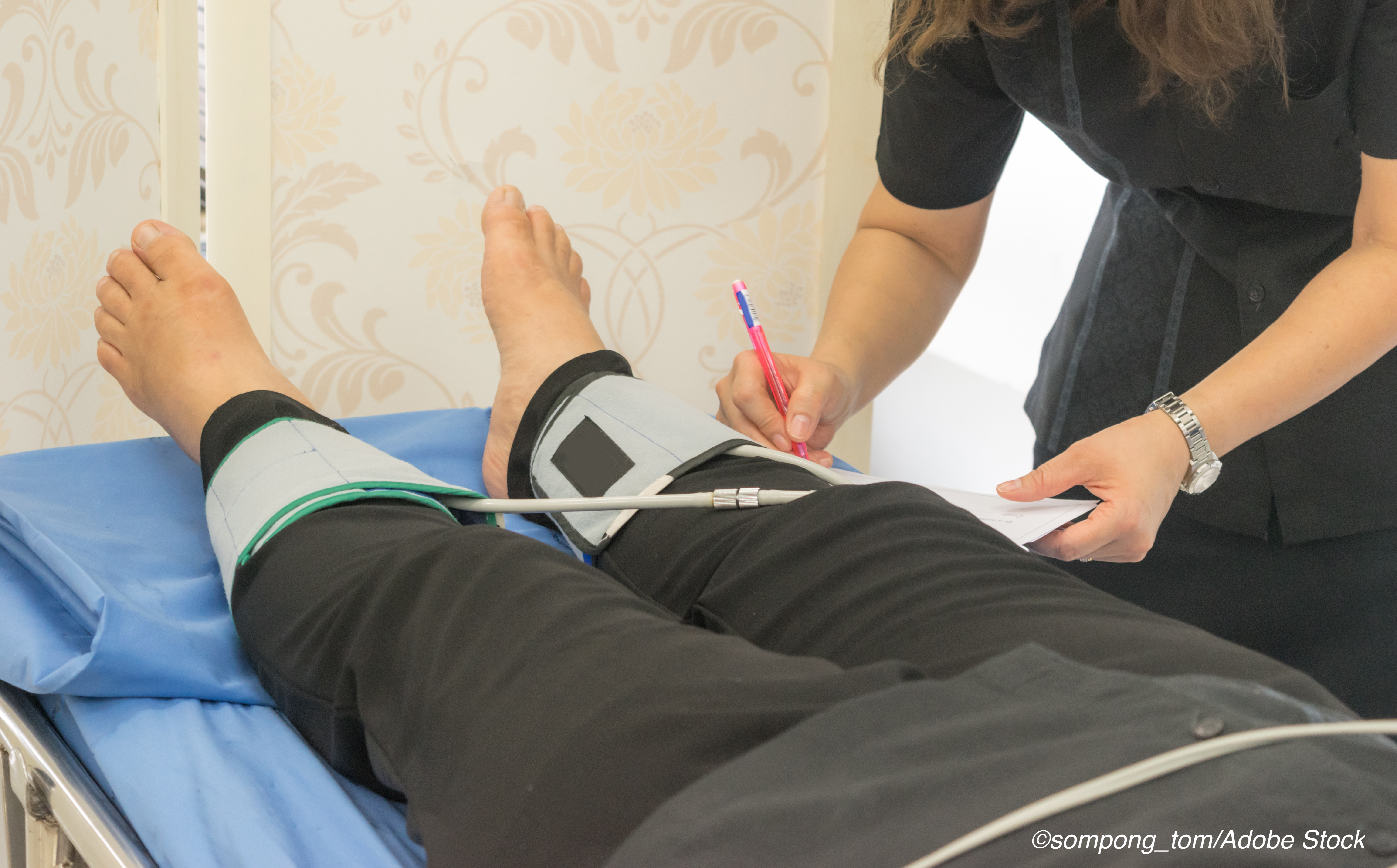
Despite guidelines recommending statin therapy for all patients with peripheral artery disease (PAD), a full 40% are not receiving these treatments at all, and most are not receiving aggressive enough lipid lowering therapies (LLT) to reduce low-density lipoprotein cholesterol (LDL-C). Consequently, their risks of major adverse cardiovascular events (MACE) and major adverse limb events (MALE) remain high, according to results published in the Journal of the American College of Cardiology.
These findings are important in the broader context of lipid lowering in these patients, which has been less than optimal for years, according to Eric A. Secemsky, MD, MSc, of Beth Israel Deaconess Medical Center, Vascular Research, and the Richard A. and Susan F. Smith Center for Outcomes Research in Cardiology, Harvard Medical School, Boston, and co-authors, who provided an accompanying editorial.
“Despite the availability of effective lipid-lowering therapies, PAD remains substantially undertreated, a phenomenon that has persisted over the last 2 decades. The landmark PARTNERS (Peripheral Arterial Disease Awareness, Risk, and Treatment: New Resources for Survival) study, involving 350 primary care clinics across the United States in 1999, found that hyperlipidemia was treated in only 44% of patients with new PAD and 56% of patients with a prior diagnosis of PAD. This was markedly lower than the percentage of patients with cardiovascular disease who were treated with statins (73%),” they wrote.
Connie N. Hess, MD, MHS, of the University of Colorado School of Medicine, Aurora, and colleagues identified 250,103 PAD patients (mean age: 74 years; 49.0% female; 68.5% Medicare insured) from MarketScan from 2014-2018, and collecting patient data on LLT use and follow-up LDL-C levels. They defined LLT use as either high-intensity (HI), which consisted of treatment with a high-intensity statin, a statin plus ezetimibe, or PCSK9 inhibitor; low intensity (LI), which encompassed any other lipid regimen; or no therapy.
Nearly all patients had hypertension (91.0%), and the most common comorbidities included diabetes (39.3%), heart failure (35.6%), and chronic kidney disease (34.7%). Over half (52.1%) had no prior peripheral revascularization, critical limb ischemia (CLI), or acute limb ischemia (ALI).
At baseline, only 20.5% of patients were being treated with HI and 39.5% were being treated with low-intensity LLT, while 40.0% received no LLT at all. Also at baseline, 18,747 patients had available LDL-C measurements (median: 91 mg/dL), 24.5% of whom had LDL-C ˂70 mg/dL and 25.1% on HI LLT.
During the median 15-month follow-up, minimal changes were seen in the use of HI LLT, which increased by only 1.5%.
Among the HI LLT patients, median LDL-C was 81 mg/dL, and 64% had LDL-C ≥70 mg/dL. At follow-up, HI LLT use had increased by 3.7%, the median LDL-C decreased by 4.0 mg/dL, and an additional 4.1% reached LDL-C ˂70 mg/dL. Thus, only 29% of these patients on intensive lipid management reached LDL-C ˂70 mg/dL.
Results were slightly better in patients who had experienced MACE or MALE.
“HI LLT use was greater after follow-up MACE (55.0%) or MALE (41.0%) versus no ischemic event (26.1%). After MACE or MALE, LDL-C was ˂70 mg/dL in 41.5% and 36.1% of patients, respectively, versus 27.1% in those without an event,” wrote Hess and colleagues.
They also found that smoking, hypertension, diabetes, prior lower extremity revascularization, and prior myocardial infarction were associated with an LDL-C less than 70 mg/dL at follow-up. Prior acute or critical limb ischemia was not associated.
In conclusion, Hess and colleagues wrote: “In this large analysis of a nationwide PAD population, use of LLT was overall low, and LDL-C remained elevated throughout the study. Importantly, current patterns of LLT use often do not translate to achieving LDL-C ˂70 mg/dL. Although LLT is intensified after ischemic events, PAD is treated less aggressively than coronary or cerebrovascular disease. Strategies to better implement proven therapies to reduce risk in PAD are needed.”
Secemsky and editorial co-authors commented on these findings:
“The results of this analysis are sobering. The investigators found that only 20.5% of patients with PAD were on HI LLT, 39.5% were on LI LLT, and 40% were not on any LLT. This was despite published guidelines recommending statins for all patients with PAD. Of the patients for whom LDL-C data were available, median LDL-C was 81 mg/dl in the HI LLT group, and 64% had an LDL level >70 mg/dl, an important treatment threshold for patients at high atherosclerotic risk. As in prior studies, less aggressive lipid management was observed among patients with PAD versus those with CAD, and HI LLT was used with greater frequency following MACE (55.0%) than after a major adverse limb event (41.0%). Also, intensification of regimens for patients with insufficient LDL-C control in follow-up was rare,” they wrote.
“In this issue of the Journal, Hess et al have reminded us of our health care system’s ongoing failure to optimize lipid management for patients with PAD,” concluded Secemsky et al.
Study limitations include its reliance on administrative data, lack of laboratory data for many patients, differences in ischemic risk and care and patterns of lipid management from that in the overall population, failure to assess medication adherence, and lack of data on uninsured patients and those covered by Medicaid.
-
In patients with peripheral artery disease (PAD), the use of lipid-lowering therapies is not optimal, and their LDL-C levels—and cardiovascular risks—remain elevated.
-
Researchers concluded that current approaches to lipid management in patients with PAD need to change.
Liz Meszaros, Deputy Managing Editor, BreakingMED™
This study was funded through a research grant from Amgen to CPC Clinical Research.
Hess has received research funding to CPC Clinical Research from Merck, Bayer, Janssen, and Amgen.
Secemsky is funded in part by NIH/NHLBI K23HL150290; has provided consulting for/served on the scientific advisory board for Abbott, Bayer, BD, Boston Scientific, Cook, CSI, Inari, Janssen, Medtronic, Philips, and VentureMed; and has received research grants from AstraZeneca, BD, Boston Scientific, Cook, CSI, Laminate Medical, Medtronic, and Philips.
Cat ID: 206
Topic ID: 74,206,730,206,4,914,192,925


